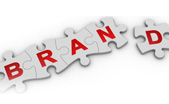The natives are restless
The recent Advertising Standards Authority ruling against Outbrain, a company specialising in advertising content, has provided fresh fuel to the native advertising debate.
Native advertising is advertising content that mimics the look of editorial content. The success of and ability to monetize native advertising means it has become widely used over the years, but given the nature of native advertising, it raises serious questions on consumer protection.
In the Outbrain ruling, the ASA determined that because the adverts in question were not clearly marked or signposted as being a 'marketing communication' (they were instead marked under headings such as 'you may also like these'), they were in breach of the CAP code and were 'misleading' to consumers. The ASA remained unconvinced by Outbrain's argument that the use of the Outbrain logo next to the paid-for links was to provide information on the service that Outbrain provides (which could be viewed by clicking on the Outbrain logo). The decision will not have come as a great surprise to most within the industry as some sort of regulatory intervention has been anticipated for some time. It seems a regulatory decision may have been necessary from a consumer protection point of view in order to prevent native advertising becoming the 'wild-west' of the content world, but there is also likely to be an important benefit to advertisers and publishers.
 One of the core debates surrounding native advertising is how it affects, or how it is perceived to affect, the integrity and independence of publishers. Editorial independence free from the influence of third parties is a value jealously guarded by publishers. Today, there are a handful of online publishers which use only native advertising on their platforms and have done so with considerable commercial success, for example, Buzzfeed. For a great number of publishers however, the issue of sponsored content does not sit easily with journalistic independence and there remains a tension between sponsored content and brand values.
One of the core debates surrounding native advertising is how it affects, or how it is perceived to affect, the integrity and independence of publishers. Editorial independence free from the influence of third parties is a value jealously guarded by publishers. Today, there are a handful of online publishers which use only native advertising on their platforms and have done so with considerable commercial success, for example, Buzzfeed. For a great number of publishers however, the issue of sponsored content does not sit easily with journalistic independence and there remains a tension between sponsored content and brand values.
Following the ASA decision, we are likely see increased efforts within the advertising industry to self-regulate on this issue. Prior to the ASA ruling, there had already been some efforts at this, most notably the UK's Interactive Advertising Bureau's attempt to create an frame work for industry best practice on the issue by producing a native advertising 'Playbook', which was published in 2014. The IAB has also established a working group made up of various stakeholders within the advertising industry to discuss and debate the issue of self-regulation. Though we are seeing the early stages of specific external and self-regulation of native advertising in the UK, it remains unclear whether self-regulation will prevail. Increased efforts on self-regulation will however communicate to the ASA that their involvement is not needed and will communicate to consumers that the industry is serious about consumer protection and editorial integrity. In any event, it will be interesting to follow the evolution of native advertising over the coming months and years.
If you have any questions on this article please contact us.

"We are likely to see increased efforts within the advertising industry to self regulate on this issue."


